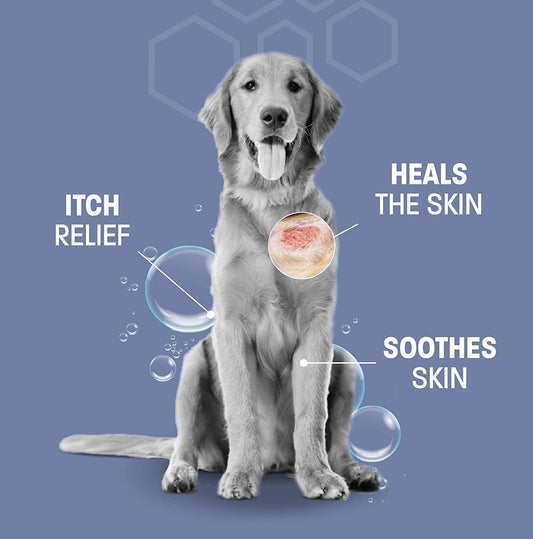UTI Treatment for Dogs: Tips and Options
Urinary tract infections (UTIs) can be a common and uncomfortable condition for dogs. Just like humans, dogs can also experience UTIs caused by bacteria entering their urinary tract. Fortunately, there are several treatment options available to help alleviate the symptoms and promote healing. In this article, we will explore the causes, symptoms, prevention, diagnosis, and various treatment options for UTIs in dogs.
Key Takeaways
- UTIs in dogs are often caused by bacteria entering the urinary tract.
- Common symptoms of UTIs in dogs include frequent urination, blood in the urine, and discomfort.
- Preventing UTIs in dogs can be achieved through proper hygiene, regular bathroom breaks, and a balanced diet.
- Diagnosing UTIs in dogs typically involves a veterinary examination, urinalysis and culture, and imaging and blood tests.
- Treatment options for UTIs in dogs include antibiotics, natural remedies, and dietary changes.
Understanding UTIs in Dogs
Causes of UTIs in Dogs
UTIs in dogs can be caused by various factors, including bacterial infections, bladder stones, and anatomical abnormalities. Bacterial infections are the most common cause of UTIs in dogs, with certain bacteria, such as Escherichia coli, being the primary culprits. Bladder stones, also known as uroliths, can irritate the bladder and lead to UTIs. Additionally, anatomical abnormalities, such as a narrow urethra or a weakened bladder sphincter, can make dogs more prone to developing UTIs.
Symptoms of UTIs in Dogs
Symptoms of UTIs in dogs can vary depending on the severity of the infection. It's important to be aware of these signs so you can seek veterinary care if needed. Some common symptoms include frequent urination, urgency to urinate, blood in the urine, cloudy or strong-smelling urine, discomfort or pain while urinating, and excessive licking of the genital area. If you notice any of these symptoms in your dog, it's best to consult with a veterinarian for proper diagnosis and treatment.
Preventing UTIs in Dogs
Preventing urinary tract infections (UTIs) in dogs is crucial for their overall health and well-being. UTIs can cause discomfort and pain for dogs, and if left untreated, they can lead to more serious health issues. Here are some tips to help prevent UTIs in dogs:
Diagnosing UTIs in Dogs
Veterinary Examination
During a veterinary examination for a suspected urinary tract infection (UTI) in dogs, the veterinarian will perform a thorough physical examination to assess the overall health of the dog. This may include checking the dog's temperature, heart rate, and respiratory rate. The veterinarian will also ask the pet owner about any symptoms or changes in behavior that they have noticed in their dog. Additionally, the veterinarian may palpate the dog's abdomen to check for any signs of discomfort or abnormalities.
Urinalysis and Culture
Urinalysis and culture are important diagnostic tests used to identify and confirm urinary tract infections (UTIs) in dogs. These tests provide valuable information about the presence of bacteria, white blood cells, and other substances in the urine that indicate an infection. Urinalysis involves analyzing the physical and chemical properties of the urine, while culture involves growing bacteria from the urine sample to determine the specific type of bacteria causing the infection.
Imaging and Blood Tests
Imaging and blood tests are important diagnostic tools used to further evaluate and confirm a urinary tract infection (UTI) in dogs. These tests provide valuable information about the extent and severity of the infection, as well as any underlying conditions that may be contributing to the UTI. Imaging techniques such as X-rays or ultrasound can help identify any abnormalities in the urinary tract, such as stones or tumors, that may be causing the infection. Blood tests can indicate the presence of inflammation or infection in the body, and may also help identify any underlying health issues that need to be addressed. It is important for veterinarians to utilize these tests in order to accurately diagnose and treat UTIs in dogs.
Treating UTIs in Dogs
Antibiotics for UTIs
When it comes to treating UTIs in dogs, antibiotics are often the go-to option. These medications are specifically designed to target and eliminate the bacteria causing the infection. Antibiotics work by inhibiting the growth and reproduction of bacteria, helping to alleviate the symptoms and promote healing. It's important to follow the prescribed dosage and duration of the antibiotic treatment to ensure effectiveness. Yeast infection remedies can also be used in conjunction with antibiotics to address any secondary infections or imbalances.
Natural Remedies for UTIs
While antibiotics are the most common treatment for UTIs in dogs, there are also natural remedies that can help promote healing and prevent future infections. These remedies can be used in conjunction with antibiotics or as an alternative for dogs who cannot tolerate antibiotics. It's important to note that natural remedies should not replace veterinary care, but they can be a helpful addition to a comprehensive treatment plan.
Dietary Changes for UTIs
Diet plays a crucial role in managing and preventing UTIs in dogs. Making the right dietary changes can help support a healthy urinary tract and reduce the risk of infection. Here are some key points to consider:
UTIs, or urinary tract infections, are a common health issue in dogs. If left untreated, UTIs can cause discomfort and potentially lead to more serious complications. At Pet Health Pros, we understand the importance of your dog's health and well-being. That's why we offer a range of affordable and top-grade pet health supplies, including products specifically designed to treat UTIs. Our products are made right here in the USA and are backed by a 100% satisfaction guarantee. Don't let your dog suffer from a UTI - visit Pet Health Pros today and give them the care they deserve.
Conclusion
In conclusion, UTIs in dogs are a common and treatable condition. Understanding the causes, symptoms, and prevention methods can help dog owners take proactive steps to keep their pets healthy. Diagnosing a UTI requires a veterinary examination, urinalysis and culture, and sometimes imaging and blood tests. Once diagnosed, treatment options include antibiotics, natural remedies, and dietary changes. It is important to consult with a veterinarian to determine the best course of action for your dog. By being aware of the signs and symptoms of UTIs and taking appropriate measures, dog owners can help their furry friends recover and prevent future infections. Remember, a healthy dog is a happy dog!
Disclaimer: This article is for informational purposes only and should not replace professional veterinary advice. If your dog is experiencing symptoms of a UTI, please consult with a veterinarian.
Frequently Asked Questions
Can UTIs in dogs go away on their own?
In some cases, mild UTIs may resolve on their own without treatment. However, it is always recommended to consult with a veterinarian to ensure proper diagnosis and treatment.
How long does it take for antibiotics to work for a dog's UTI?
The duration of antibiotic treatment for a dog's UTI can vary depending on the severity of the infection and the specific antibiotic prescribed. It is important to follow the veterinarian's instructions and complete the full course of antibiotics.
Are there any natural remedies that can help with a dog's UTI?
There are some natural remedies that may help alleviate the symptoms of a dog's UTI, such as cranberry supplements or herbal remedies. However, it is important to consult with a veterinarian before using any natural remedies to ensure they are safe and effective for your dog.
Can diet affect a dog's susceptibility to UTIs?
Yes, diet can play a role in a dog's susceptibility to UTIs. Feeding a balanced diet that promotes urinary health and hydration can help reduce the risk of UTIs. Your veterinarian can provide recommendations on the best diet for your dog.
What are the common signs of a UTI in dogs?
Common signs of a UTI in dogs include frequent urination, straining to urinate, blood in the urine, strong odor of urine, and urinating in inappropriate places. If you notice any of these signs, it is important to consult with a veterinarian for proper diagnosis and treatment.
Can female dogs get UTIs?
Yes, female dogs can get UTIs. In fact, they are more prone to UTIs due to their shorter urethra, which allows bacteria to enter the urinary tract more easily. It is important to monitor female dogs for signs of UTIs and seek veterinary care if necessary.









